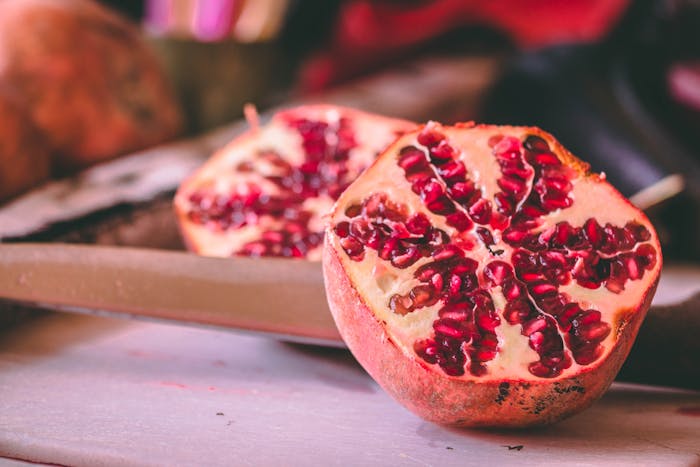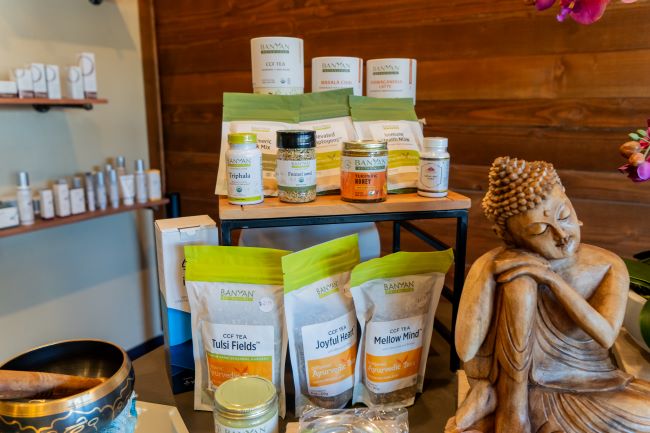
22 Mar 2024 - News
Astringent Foods: A Step-by-Step Guide to Overhaul Your Diet
A comprehensive guide to help you incorporate astringent foods into your diet. Find out the benefits, types, and delicious ways to include them in your meals.
What are astringent foods?
Astringent foods are the ones that make your mouth feel like you’re chewing on a wad of cotton balls. They’re purposely drying, roughening, and puckery. Astringency in foods is caused by compounds known as polyphenols (in tea), tannins (in wine) and catechins (in chocolate). These substances can tone tissues, cleanse mucus membranes, absorb excess moisture to help bind stool, improve absorption in the gut wall and more.
Why are astringent foods important?
Astringent foods are known for their distinct and varied health benefits. These foods, which leave your mouth dry and puckered, have lots of polyphenols, tannins, and catechins—compounds that offer antioxidant and anti-inflammatory effects. The Ayurveda diet heavily relies on astringent tastes to balance energies within the body. It's said that it helps your overall health by lowering mucus levels, fighting off congestion, and toning tissues.
On top of all this, these foods can tighten tissues in your stomach, which help get rid of toxins in your body and provide healthy skin & hair. They also have a way to ground both physically and mentally, minimizing excessive qualities like sweetness and heaviness. All things considered, adding astringent foods to your daily menu can increase immunity levels, find balance in doshas (bodily energy), aid digestion efficiency and improve overall well-being.
Benefits of Astringents
Improved digestion: By toning up the digestive system with these odd foods, nutrients are more easily absorbed and problems like bloating or indigestion can be avoided.
Oral health: That weird puckering sensation we mentioned earlier actually helps produce saliva in the mouth, which does wonders for oral health. Saliva cleanses our mouths and when there's no bacteria growth there’s no decay either.
Skin health: Doing great things for the outside too! The tightening effect that comes along with these strange foods can reduce pore size as well as keep oil production regular (which is beneficial for those who have oily or acne-prone skin).

Types of Astringent Foods
Fruits: Pomegranates, green bananas, cranberries, and apples (with peels) are all examples – all fruits known for their tartness – contain tannins that give them the bitter flavor necessary for their properties.
Vegetables: Leafy greens like spinach and kale, as well as broccoli and Brussels sprouts, have a bitter taste for the same reason. Although they may not be the most appetizing options out there, their benefits make it worth overlooking.
Grains: Wheat, quinoa, and barley are your go-tos here
Protein: Chicken is considered to have astringent properties
Spices: There are quite a few spices with this quality like nutmeg, oregano, parsley, turmeric, saffron, and others are known for their astringency
How to Incorporate Astringent Foods in Your Diet
Adding fruits to your daily routine: Starting your day with an apple or throwing berries in a breakfast smoothie is a great way to include them. Slicing pomegranates into pieces or enjoying a grapefruit during lunch are good options too.
Creative vegetable recipes: Roasting Brussels sprouts or putting together a tangy vinaigrette for your spinach salad can be more fun and flavorful ways of eating these foods. Also try incorporating bitter greens into soups and stir-fries!
Herbal teas and infusions: Green tea, chamomile – even though these two don’t sound very tasty – they’re actually pretty nice to sip on throughout the day! They have the same drying effect on your tongue as other foods do but are known for being quite refreshing.

Potential Risks and Precautions
Overconsumption: Eating too much of anything will lead to consequences (in this case its dryness/irritation of mouth). While there are many benefits to these foods, moderation is key when working them into meals.
Allergies: If you discover any negative reactions after consuming specific fruits (apples or berries) it’s essential you go see someone about it. Don’t ignore allergies like these in hopes that they’ll end up just disappearing eventually.
FAQs
Can eating too many astringent foods be harmful?
While they offer benefits, overeating these types of food can cause unpleasant side effects. These include dryness or irritation in the mouth and discomfort while digesting food. It’s important to eat moderately and pay attention if you’re allergic to any of these foods.
How do I know if something is astringent?
Typically, astringent tasting food can be bitter, sour, or puckering. When consumed, it will leave your mouth feeling dry or tight - that is when you’ll know you’ve had an astringent food. Food high in tannin content may also be good indicators of their ability to perform this function.
Conclusion: Incorporating astringent foods into your diet can have a transformative effect on your health and well-being. By embracing the diverse array of fruits, vegetables, and herbal teas available, you can enjoy delicious meals while reaping the numerous benefits these foods have to offer.
Christianne Madrazo. Certified Ayurvedic Practitioner, graduate of Mount Madonna Institute, College of Ayurveda in California, and student of Dr. Vasant Lad, one of the world’s foremost experts in Ayurveda.
AyurVida Wellness and Clinic is located in Mission Hills, San Diego, CA.
FOR ASSISTANCE TEXT 619-637-0201

CONTACT US
PHONE:
619-291-6614
For immediate assistance:
TEXT 619-637-0201
ADDRESS:
1611 West Lewis San Diego CA 92103
